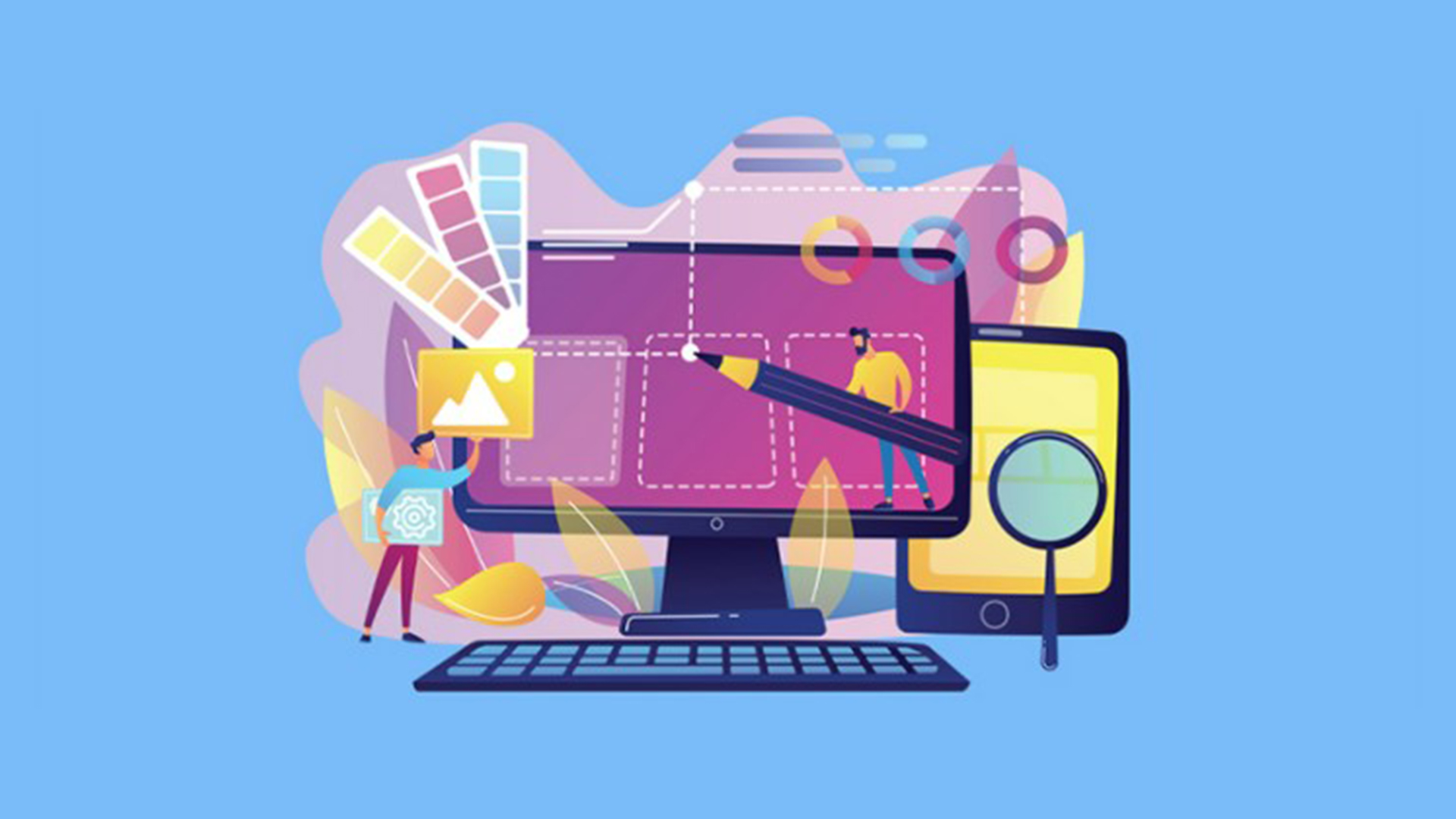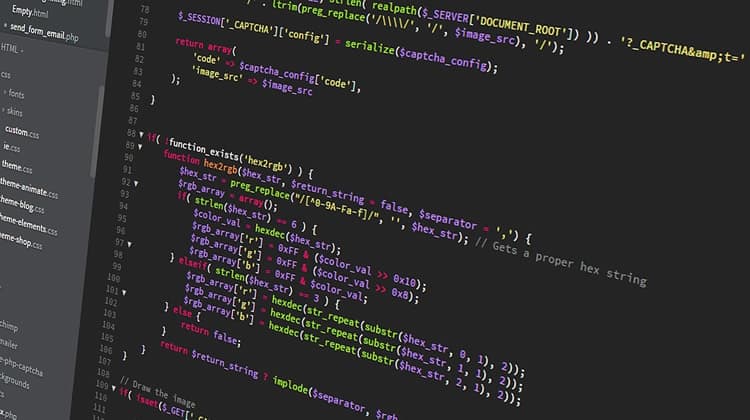All Categories
Featured
Table of Contents
- – Web Design Tools & Software - Webflow Tips and...
- – Top Web Design Companies - Find Web Designers...
- – Awwwards - Website Awards - Best Web Design T...
- – Ciw Web Design Series Tips and Tricks:
- – Web Design Software By Xara Tips and Tricks:
- – Web Development Bachelor's Degree - Full Sail...
- – Collaborate & Create Amazing Graphic Design ...
- – Web Developers And Digital Designers - Burea...
- – Web Design Ledger: Homepage Tips and Tricks:
- – St Louis Seo Company - St Louis Web Design A...
- – Mrw Web Design - Wordpress Websites For Nonp...
Web Design Tools & Software - Webflow Tips and Tricks:
Quick summary Functionality and the utility, not the visual design, figure out the success or failure of a site. Given that the visitor of the page is the only individual who clicks the mouse and therefore chooses everything, user-centric design has actually developed as a basic technique for successful and profit-oriented website design - web design frederick md.
and the utility, not the visual style, determine the success or failure of a site. Considering that the visitor of the page is the only person who clicks the mouse and therefore chooses everything, user-centric design has ended up being a standard method for successful and profit-oriented web style. After all, if users can't utilize a feature, it may too not exist.
g. where the search box need to be positioned) as it has actually currently been performed in a variety of articles; instead we focus on the methods which, utilized effectively, can lead to more sophisticated style decisions and simplify the procedure of perceiving provided details. Please observe that you might be interested in the usability-related articles we've published before: Principles Of Excellent Site Style And Effective Website Design Standards, In order to utilize the principles appropriately we first require to comprehend how users connect with websites, how they believe and what are the fundamental patterns of users' behavior.
Top Web Design Companies - Find Web Designers Here Tips and Tricks:
Visitors glimpse at each brand-new page, scan some of the text, and click on the first link that captures their interest or vaguely resembles the important things they're searching for. There are big parts of the page they do not even look at. Most users look for something intriguing (or helpful) and clickable; as quickly as some appealing prospects are discovered, users click.
If a page supplies users with premium material, they want to compromise the content with ads and the design of the site. This is the reason that not-that-well-designed sites with high-quality content gain a great deal of traffic over years. Content is more important than the style which supports it.

Users don't check out, they scan. Notice how "hot" locations abrupt in the middle of sentences. This is common for the scanning procedure. Really basic concept: If a site isn't able to meet users' expectations, then designer stopped working to get his job done appropriately and the company loses money. The higher is the cognitive load and the less user-friendly is the navigation, the more prepared are users to leave the site and look for options.
Awwwards - Website Awards - Best Web Design Trends Tips and Tricks:
Neither do they scan web page in a direct fashion, going sequentially from one website section to another one. Rather users satisfice; they pick the very first reasonable alternative. As quickly as they discover a link that appears like it might result in the objective, there is a great possibility that it will be right away clicked.
It doesn't matter to us if we understand how things work, as long as we can use them. If your audience is going to act like you're designing billboard, then style excellent signboards." Users wish to be able to manage their internet browser and count on the consistent data discussion throughout the website.
If the navigation and website architecture aren't intuitive, the number of enigma grows and makes it harder for users to comprehend how the system works and how to receive from point A to point B. A clear structure, moderate visual hints and quickly identifiable links can help users to discover their course to their goal.
Ciw Web Design Series Tips and Tricks:

claims to be "beyond channels, beyond items, beyond distribution". What does it suggest? Considering that users tend to explore sites according to the "F"-pattern, these three declarations would be the first aspects users will see on the page once it is loaded. Although the style itself is easy and instinctive, to comprehend what the page has to do with the user requires to browse for the answer.
Once you've attained this, you can interact why the system works and how users can benefit from it. People will not utilize your web site if they can't discover their method around it. 2. Do Not Squander Users' Persistence, In every job when you are going to use your visitors some service or tool, attempt to keep your user requirements minimal.
First-time visitors are prepared to, not filling long web types for an account they may never use in the future. Let users check out the site and find your services without forcing them into sharing personal data. It's not reasonable to require users to go into an email address to evaluate the function.
Web Design Software By Xara Tips and Tricks:
Stikkit is a best example for an user-friendly service which requires almost nothing from the visitor which is inconspicuous and reassuring. Which's what you desire your users to feel on your website. Apparently, Mite requires more. Nevertheless the registration can be performed in less than 30 seconds as the form has horizontal orientation, the user does not even need to scroll the page.
A user registration alone is adequate of an obstacle to user navigation to cut down on inbound traffic. Handle To Focus Users' Attention, As sites provide both fixed and dynamic material, some aspects of the user interface attract attention more than others do.
Focusing users' attention to particular locations of the site with a moderate use of visual components can help your visitors to obtain from point A to point B without thinking about how it really is expected to be done. The less concern marks visitors have, the they have and the more trust they can develop towards the company the website represents.
Web Development Bachelor's Degree - Full Sail University Tips and Tricks:
4. Pursue Function Direct exposure, Modern website design are generally criticized due to their technique of directing users with aesthetically appealing 1-2-3-done-steps, big buttons with visual effects and so on. However from the design perspective these elements actually aren't a bad thing. On the contrary, such as they lead the visitors through the site material in a really easy and easy to use way.
The website has 9 main navigation alternatives which are noticeable at the very first glimpse. What matters is that the content is well-understood and visitors feel comfortable with the method they engage with the system.
Rather a rate: simply what visitors are looking for. An optimal option for effective writing is touse short and succinct expressions (come to the point as rapidly as possible), usage scannable layout (classify the content, utilize multiple heading levels, use visual elements and bulleted lists which break the circulation of consistent text blocks), usage plain and unbiased language (a promo does not require to sound like ad; give your users some affordable and objective reason why they need to utilize your service or stay on your website)6.
Collaborate & Create Amazing Graphic Design For Free Tips and Tricks:
Users are seldom on a website to take pleasure in the design; in addition, most of the times they are trying to find the info regardless of the style - web design frederick md. Pursue simplicity instead of complexity. From the visitors' viewpoint, the finest website style is a pure text, without any ads or further material blocks matching exactly the question visitors used or the material they've been searching for.
Finch clearly provides the info about the website and offers visitors an option of choices without overcrowding them with unnecessary material. Not just does it help to for the visitors, but it makes it possible to view the information presented on the screen.
Complex structures are harder to read, scan, analyze and work with. If you have the option between separating 2 design sections by a noticeable line or by some whitespace, it's usually better to use the whitespace option. (Simon's Law): the better you manage to supply users with a sense of visual hierarchy, the easier your content will be to view.
Web Developers And Digital Designers - Bureau Of Labor ... Tips and Tricks:
The very same conventions and rules must be applied to all elements.: do the most with the least quantity of hints and visual elements. Four significant indicate be considered: simpleness, clearness, distinctiveness, and emphasis. Simpleness consists of just the components that are most crucial for interaction. Clearness: all elements should be designed so their significance is not ambiguous.
Conventions Are Our Buddies, Conventional design of site elements doesn't lead to a dull web website. As they lower the learning curve, the requirement to figure out how things work. It would be an usability nightmare if all websites had different visual discussion of RSS-feeds. That's not that different from our regular life where we tend to get utilized to fundamental concepts of how we organize information (folders) or do shopping (positioning of items).
comprehend what they're anticipating from a site navigation, text structure, search placement etc. A typical example from use sessions is to equate the page in Japanese (presuming your web users don't understand Japanese, e. g. with Babelfish) and supply your use testers with a task to discover something in the page of various language.
Web Design Ledger: Homepage Tips and Tricks:
Test Early, Test Often, This so-called TETO-principle ought to be used to every web style project as usability tests often offer into considerable problems and issues related to an offered design. Test not too late, not too little and not for the wrong reasons.
Some important indicate bear in mind: according to Steve Krug, and screening one user early in the job is better than screening 50 near completion. Accoring to Boehm's first law, mistakes are most frequent throughout requirements and style activities and are the more costly the later they are eliminated.
That suggests that you design something, test it, fix it and then test it once again. There may be issues which haven't been found throughout the very first round as users were virtually obstructed by other issues. use tests. Either you'll be indicated the problems you have or you'll be indicated the absence of major style defects which is in both cases an useful insight for your project.
St Louis Seo Company - St Louis Web Design And Internet ... Tips and Tricks:

This holds for designers. After you've dealt with a website for few weeks, you can't observe it from a fresh perspective any longer. You understand how it is developed and therefore you know exactly how it works you have the wisdom independent testers and visitors of your site wouldn't have.
It can be connected to other locations such as graphic design, user experience, and multimedia arts, but is more aptly seen from a technological standpoint. It has become a large part of individuals's daily lives. It is tough to think of the Web without animated graphics, various designs of typography, background, videos and music.

Throughout 1991 to 1993 the World Wide Web was born. Text-only pages could be seen using a simple line-mode browser. There had actually been no integrated approach to graphic style aspects such as images or noises.
Mrw Web Design - Wordpress Websites For Nonprofits ... Tips and Tricks:
The W3C was produced in October 1994 to "lead the Web to its full potential by establishing common protocols that promote its advancement and guarantee its interoperability." This prevented any one company from monopolizing a propriety browser and programs language, which might have altered the effect of the Web as a whole.
As this has occurred the innovation of the web has actually likewise moved on. There have actually also been considerable modifications in the way individuals use and access the web, and this has altered how sites are created.
Learn more about Lovell Media Group LLC or TrainACETable of Contents
- – Web Design Tools & Software - Webflow Tips and...
- – Top Web Design Companies - Find Web Designers...
- – Awwwards - Website Awards - Best Web Design T...
- – Ciw Web Design Series Tips and Tricks:
- – Web Design Software By Xara Tips and Tricks:
- – Web Development Bachelor's Degree - Full Sail...
- – Collaborate & Create Amazing Graphic Design ...
- – Web Developers And Digital Designers - Burea...
- – Web Design Ledger: Homepage Tips and Tricks:
- – St Louis Seo Company - St Louis Web Design A...
- – Mrw Web Design - Wordpress Websites For Nonp...
Latest Posts
Web Design & Seo By Acs - Syracuse Web Design - Google ... Tips and Tricks:
Web Design Vs. Web Development - Upwork Tips and Tricks:
Law Firm Website Design, Attorney Web Design, Lawyer ... Tips and Tricks:
More
Latest Posts
Web Design & Seo By Acs - Syracuse Web Design - Google ... Tips and Tricks:
Web Design Vs. Web Development - Upwork Tips and Tricks:
Law Firm Website Design, Attorney Web Design, Lawyer ... Tips and Tricks: